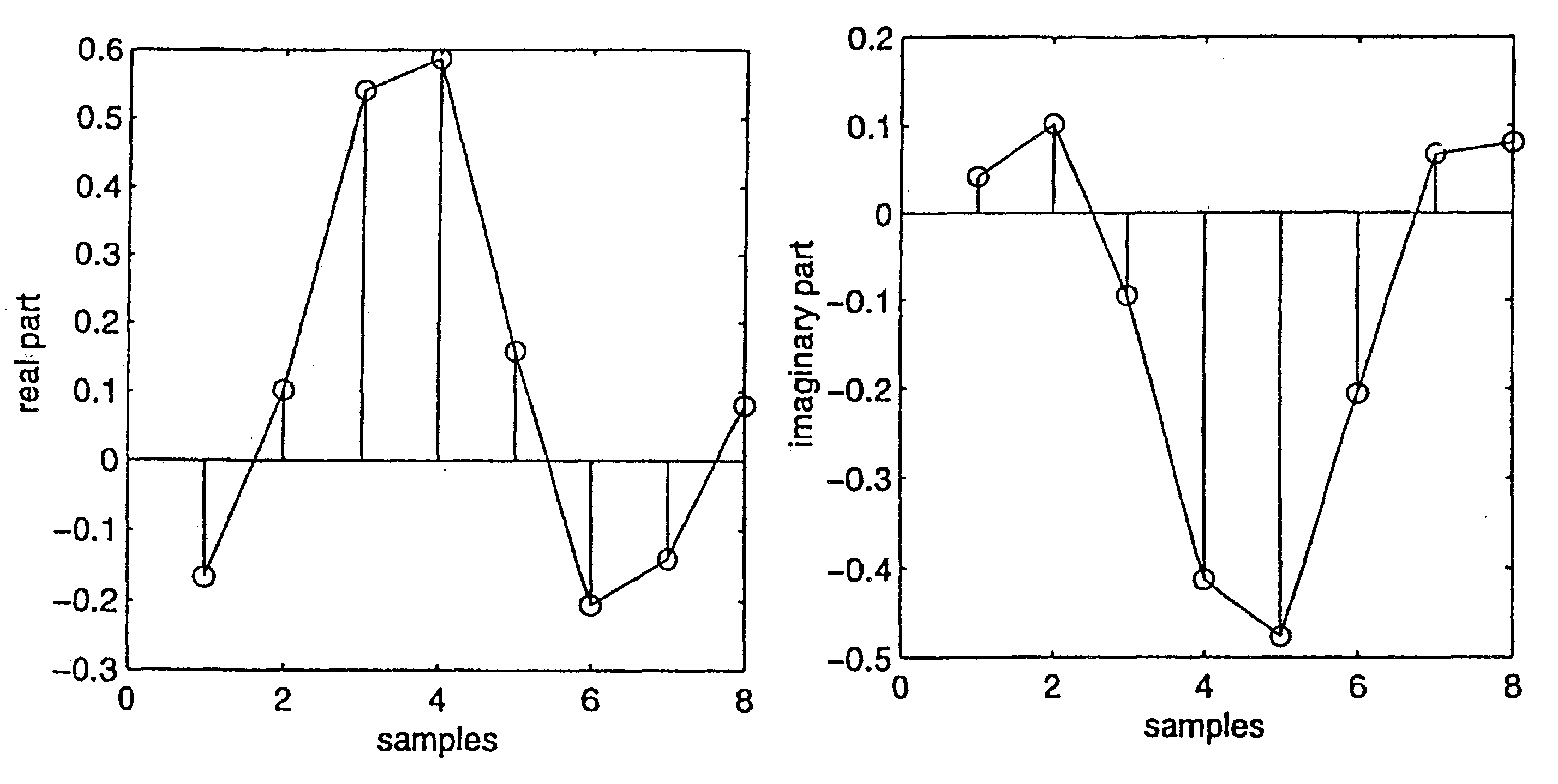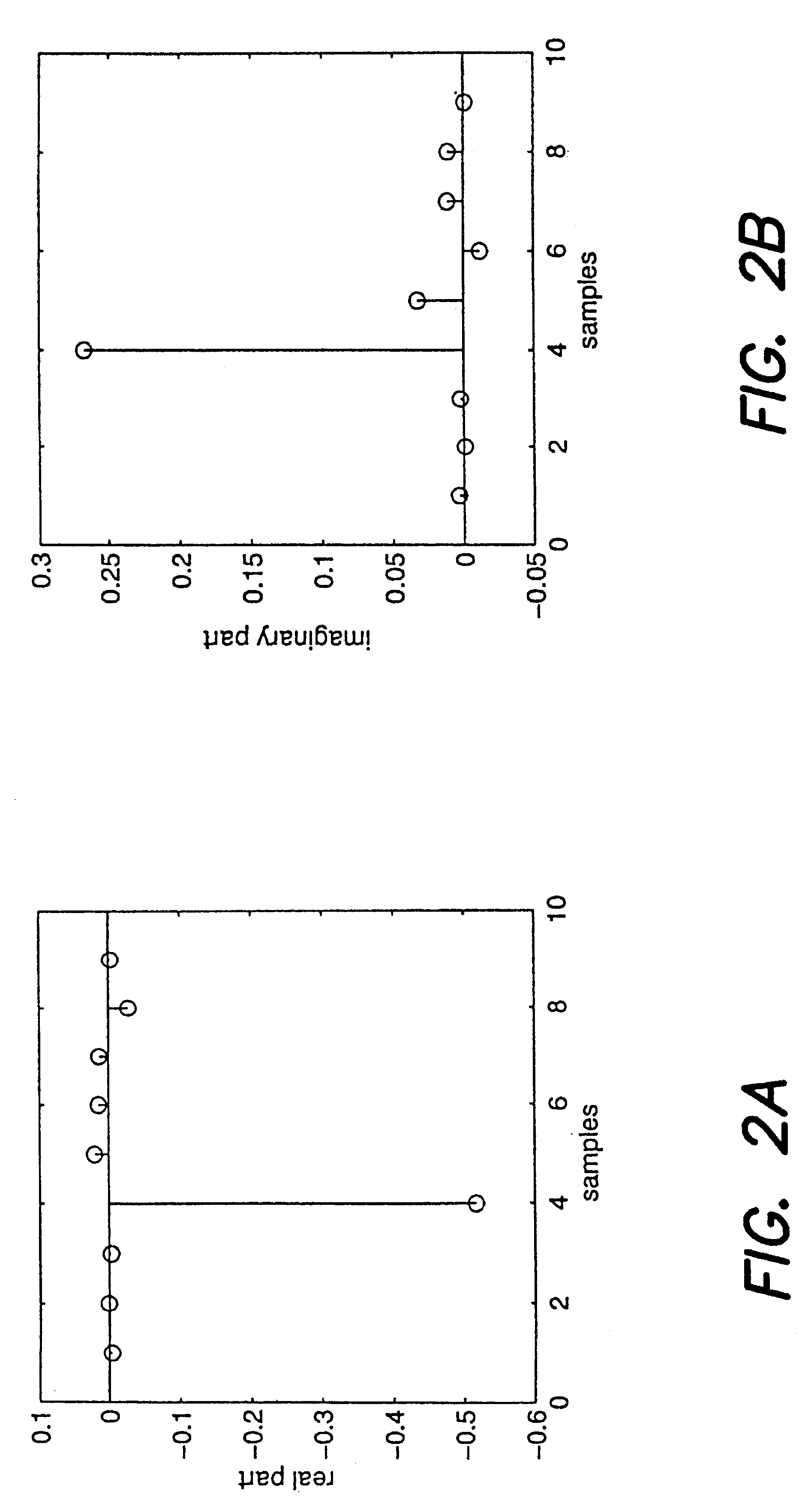Blind channel equalizers and methods of blind channel equalization
a blind channel and equalizer technology, applied in the field of channel equalization, can solve the problems of difficult to achieve accurate channel estimate, sensitivity to channel order estimate variation, and inability to identify blind channels with sos-based algorithms, etc., and achieve the effect of less sensitive to channel order estima
- Summary
- Abstract
- Description
- Claims
- Application Information
AI Technical Summary
Benefits of technology
Problems solved by technology
Method used
Image
Examples
Embodiment Construction
1. Linear Multi-path Channels
FIG. 1 is a simulation result applying the third embodiment and using the maximum likelihood estimate with L=5 and k=4, i.e., the 4-th column of the channel convolution matrix will be anchored, with unknown channel order. In this simulation, the channel is assumed to be a two-ray multi-path with the following channel impulse response (see FIG. 1):
h(t)=p(t)-0.5(1+j)p(t-T / 3)
where:
T is the baud period;
p(t) a raised-cosine pulse with .beta.0.1 and truncated to 4T. The simulation results as shown in FIGS. 3 and 4 demonstrate that this scheme is particular effective when SNR is above 15 dB, even when the data length is as short as 100T.
For simulation of a GSM transmission environment, the de-rotation method suggested by Alle-Jan van der Veen and A. Paulraj in their paper "Singular Value Analysis of Space-Time Equalization in the GSM Mobile System," (Proceedings of IEEE ICASSP, 1073-1076, Atlanta, May, 1996) will be adopted. In this approach, the r...
PUM
 Login to View More
Login to View More Abstract
Description
Claims
Application Information
 Login to View More
Login to View More - R&D
- Intellectual Property
- Life Sciences
- Materials
- Tech Scout
- Unparalleled Data Quality
- Higher Quality Content
- 60% Fewer Hallucinations
Browse by: Latest US Patents, China's latest patents, Technical Efficacy Thesaurus, Application Domain, Technology Topic, Popular Technical Reports.
© 2025 PatSnap. All rights reserved.Legal|Privacy policy|Modern Slavery Act Transparency Statement|Sitemap|About US| Contact US: help@patsnap.com



